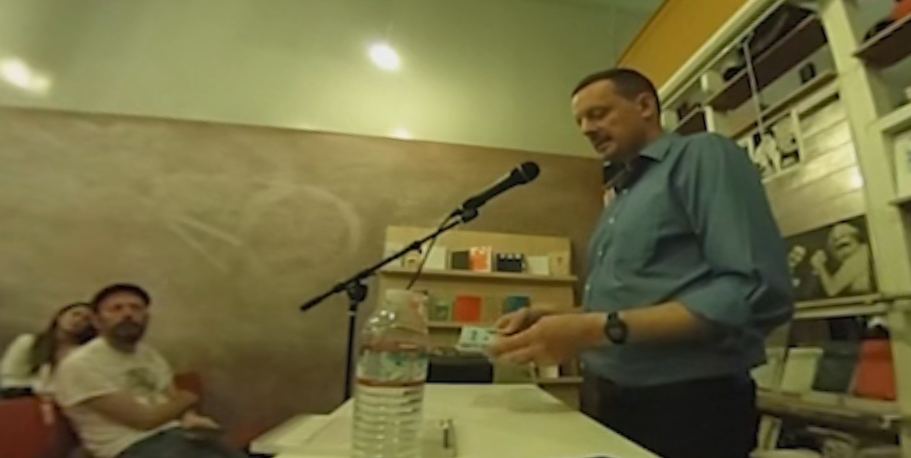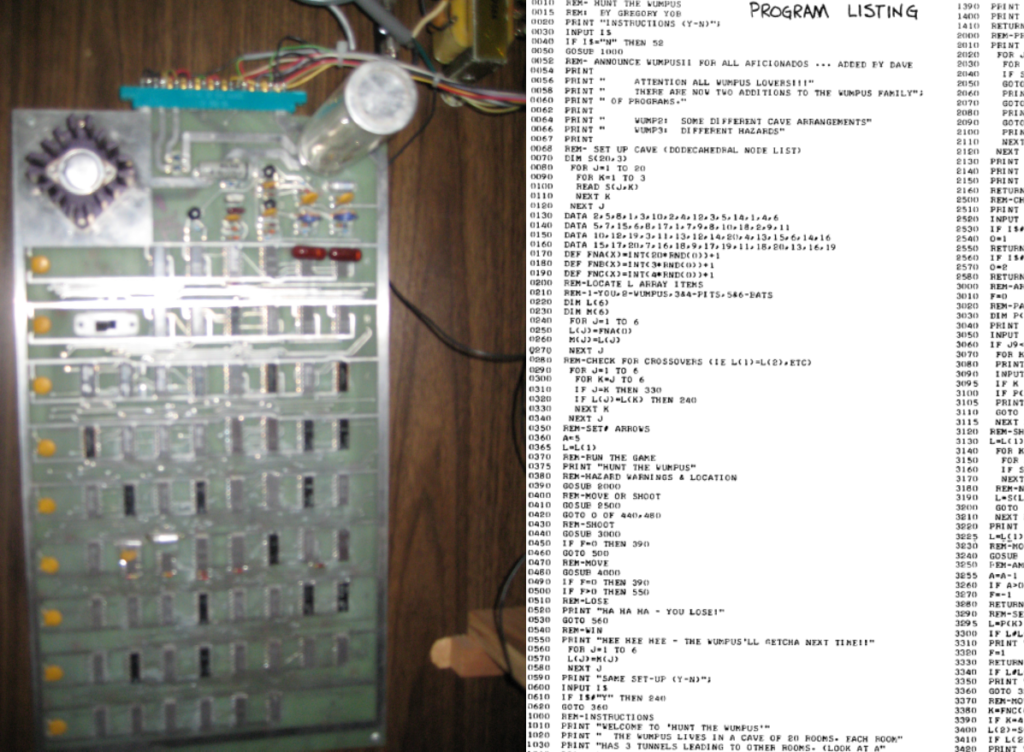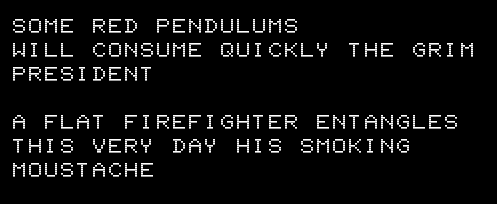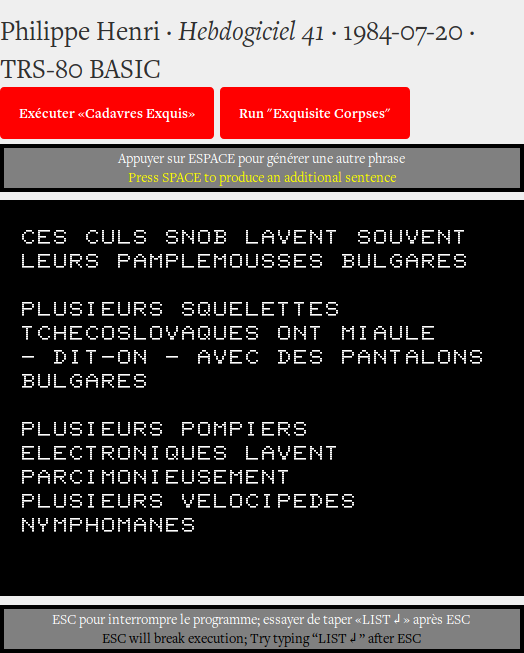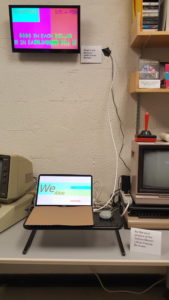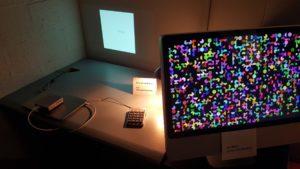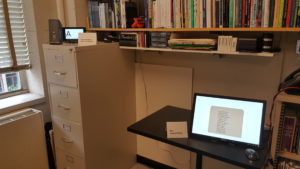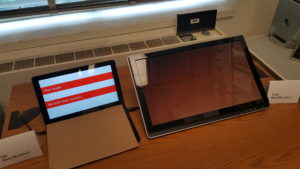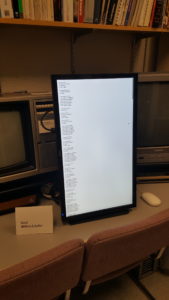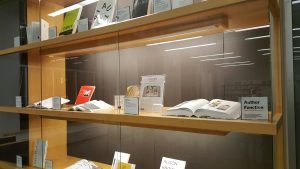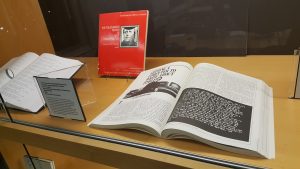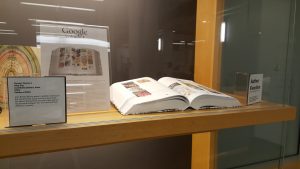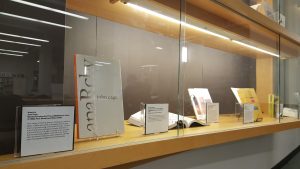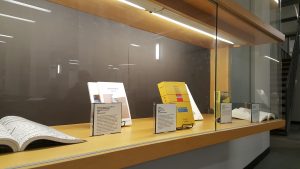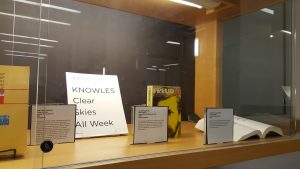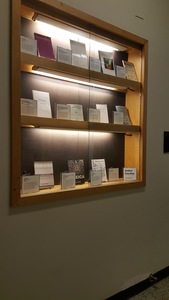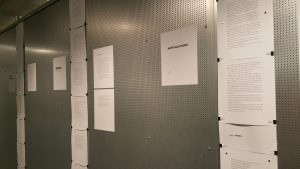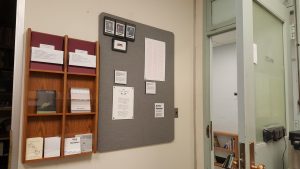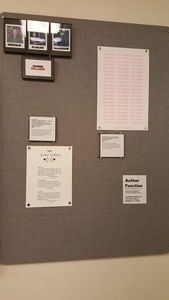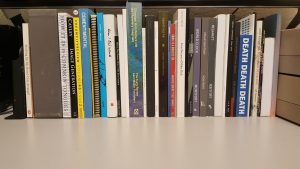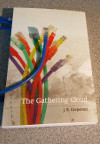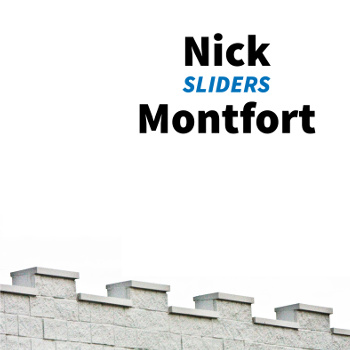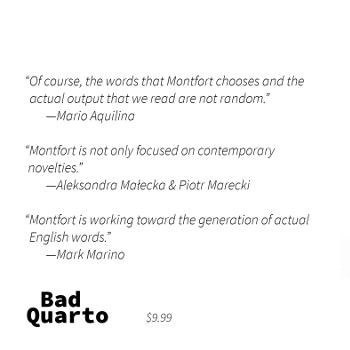A week ago, on October 2, we put Sentaniz Nimerik online. This is an electronic literature work, an example of digital storytelling and digital poetry, that is by Sixto & BIC and was facilitated by Michel DeGraff & Nick Montfort. It is in Haitian Creole — Kreyòl, as the language is called in the language itself. This language has a community of about 12 million speakers worldwide and is the language shared by everyone in Haiti. It is not the same as Haitian French or mutually intelligible with Haitian French (or any other kind of French).
You can read more about Maurice Sixto, a famous Haitian storyteller who died in 1984, on Wikipedia, in English — of course there is an entry in Haitian Creole as well. His story “Sentaniz,” well-known in Haiti, is the storytelling basis for our digital work.
BIC is a singer, songwriter, and poet who is also known as B.I.C. (Brain. Intelligence. Creativity.) He came to MIT to work on this project with us and to do a concert, which was very well-attended. His songs and poems are mostly in Haitian Creole; some in French; not in English — although BIC is fluent in English and has worked as an English teacher.
Professor Michel DeGraff is a linguist and is my colleague at MIT. Among other things, he heads the MIT-Haiti Initiative and works to advance STEM education in the Boston area in schools where education is in Haitian Creole.
We (BIC, Michel DeGraff, and I) sat down together and looked at and discussed several simple JavaScript poems, some historical, some of mine, some done by others recently. We settled on “Through the Park” (a work of mine from 2008) as a starting point for our collaboration. We changed several things about the workings of the page, and the text used in this piece is also a new text related to “Sentaniz,” not any sort of translation of anything I have written.
To make concrete a few of the formal and conceptual differences: The final result has two generated versions presented one after the other. The underlying “story” is not only an story that originated in Haitian Creole, but has been elaborated into its digital version with frame statements and questions that do not correspond to anything in “Through the Park.” The visual design is simple, but also a bit different from the simple earlier version.
To be more specific about our roles in the project, for the most part I dealt with the JavaScript code, Michel typed in what was to be written in Haitian Creole (using my different keyboard layout), and BIC said what lines we should use. But Michel and BIC consulted about particular phrasings, as you might expect, and all of us talked a bit about the types of sentences that could be used, the linguistic constraint (no reference between sentences), and the design and functioning of the page.
We spent a while in discussion beforehand, and did some work to polish the project after the three of us met, but BIC was only at MIT for one full day. It took us about an hour to actually do the core creative and development work on Sentaniz Nimerik. The project was thanks to many people and offices at MIT, with the main support for BIC’s trip coming from CAMIT, the Council for the Arts at MIT.
I recorded a video of Michel DeGraff explaining the piece (in Haitian Creole) and have posted that on YouTube with a CC license. He explains how to “view souce” and that the piece can be studied and modified. The piece itself, although very short, is released under an explicit all-permissive license to make it clear that it is available to everyone for any purpose. I hope people in Haiti and speakers of Haitian Creole elsewhere will enjoy it and develop many new ideas, stories, and poems.
